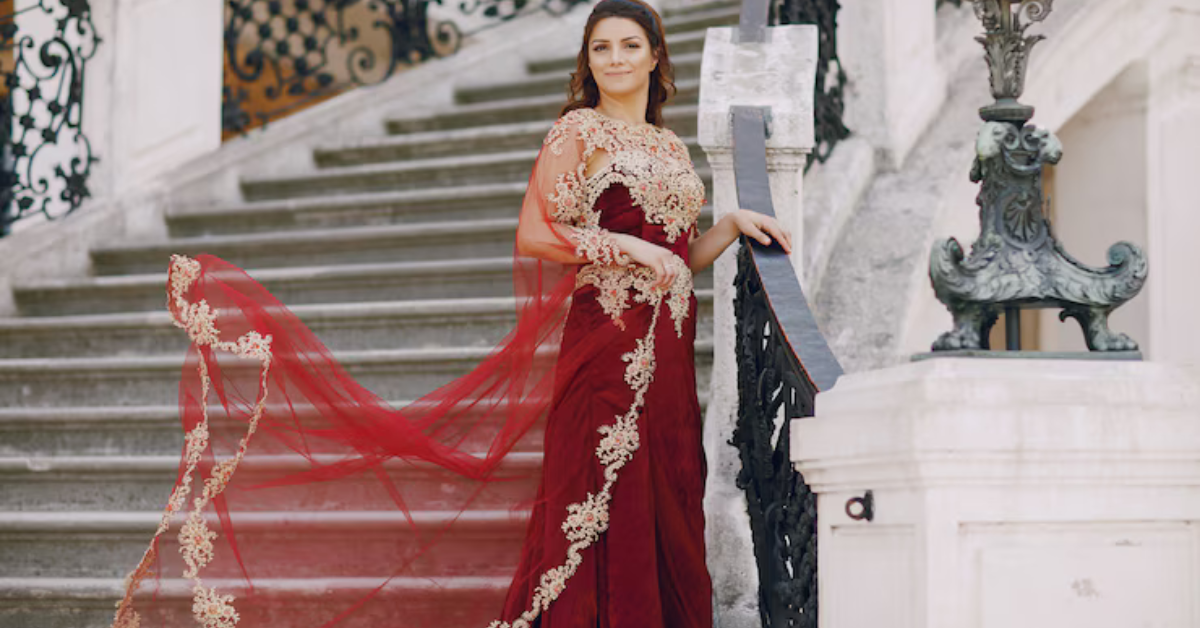The dupatta, a long scarf that is an integral part of Pakistani women’s clothing, holds deep cultural, religious, and fashion significance. This versatile piece of fabric has been a staple in South Asian attire for centuries, evolving in its use and style while maintaining its importance in Pakistani culture. In this article, we’ll explore the multifaceted significance of the dupatta in Pakistani attire.
Historical Background
To understand the dupatta’s significance, it’s important to look at its origins:
- Ancient Roots: Traces back to the Indus Valley Civilization
- Mughal Influence: Gained prominence during the Mughal era
- Cultural Evolution: Adapted across various regions of the Indian subcontinent
Cultural and Social Significance
Symbol of Modesty
In Pakistani culture, the dupatta serves as:
- A means of observing purdah (modesty)
- A way to cover the head and chest in conservative settings
- A flexible garment that allows women to adjust coverage as needed
Religious Significance
For many Muslim women in Pakistan:
- The dupatta can serve as a hijab
- It’s often used to cover the head during prayers
- Provides a way to observe Islamic dress codes in everyday life
Mark of Respect
Wearing a dupatta can be:
- A sign of respect in certain social situations
- Expected when visiting religious sites or elders
- Part of formal attire for official or ceremonial occasions
Cultural Identity
The dupatta represents:
- A connection to Pakistani and South Asian heritage
- Regional identity through specific styles and fabrics
- A shared cultural element across different Pakistani communities
Fashion Significance
Versatility in Style
The dupatta offers immense styling options:
- Can be draped in numerous ways
- Allows for personal expression within traditional dress codes
- Adaptable to various outfits (shalwar kameez, lehenga, etc.)
Completing the Outfit
In Pakistani fashion (Trends in Pakistani fashion)
- Often considered essential to complete traditional outfits
- Adds grace and flow to the overall look
- Can be a statement piece or a complementary accessory
Fabric and Design Variety
Dupattas come in:
- Various fabrics (cotton, silk, chiffon, etc.)
- Diverse designs (embroidered, printed, embellished)
- Different weights and textures for various seasons and occasions
Color Coordination
Plays a crucial role in:
- Balancing or accentuating the colors of the outfit
- Creating monochromatic or contrasting looks
- Expressing personal style and mood
Regional Variations
The significance and style of dupattas vary across Pakistan: check out cultural significance of different dress styles in Pakistan
- Punjab: Often brightly colored with intricate embroidery
- Sindh: Features traditional bandhani (tie-dye) patterns
- Khyber Pakhtunkhwa: Typically larger and used for greater coverage
- Balochistan: Often heavily embroidered and used as a shawl
Evolution in Modern Pakistani Fashion
The dupatta’s role has evolved in contemporary Pakistani society:
Fashion Statement
- Designer dupattas as standalone fashion pieces
- Incorporation into fusion and modern outfits
- Use of luxury fabrics and intricate embellishments
Adaptability to Modern Lifestyles
- Lighter, more manageable dupattas for working women
- Innovative draping styles for ease of movement
- Integration with Western-inspired outfits
Symbol of Empowerment
- Choice in wearing and styling as an expression of personal freedom
- Reinterpretation of traditional use in contemporary contexts
- Platform for showcasing Pakistani textile arts and craftsmanship
Dupatta in Pakistani Bridal Wear
In bridal attire, the dupatta holds special significance:
- Often the most ornate part of the bridal outfit
- Used in wedding rituals (e.g., covering the bride’s face)
- Considered a cherished part of the trousseau
Bridal Tip: Many brides choose to preserve their wedding dupatta as a family heirloom.
Care and Maintenance
The significance of dupattas is reflected in their care:
- Careful washing and ironing to preserve embellishments
- Proper storage to maintain shape and prevent damage
- Professional cleaning for heavily embroidered or delicate pieces
Economic Importance
The dupatta industry contributes significantly to Pakistan’s economy:
- Provides employment in textile and handicraft sectors
- Showcases Pakistani craftsmanship in international markets
- Contributes to the country’s fashion and textile exports
Conclusion
The dupatta’s significance in Pakistani attire extends far beyond its function as a simple accessory. It embodies cultural values, religious observances, and fashion sensibilities. From a symbol of modesty to a canvas for artistic expression, the dupatta continues to play a vital role in Pakistani clothing.
As Pakistan’s fashion industry evolves, the dupatta adapts, finding new forms of expression while maintaining its cultural importance. Whether worn traditionally or styled in contemporary ways, the dupatta remains an enduring symbol of Pakistani heritage and a versatile element of personal style.
In essence, the dupatta is not just a piece of cloth, but a reflection of Pakistan’s rich cultural tapestry, blending tradition with modernity, and serving as a bridge between generations and diverse communities within the country.
FAQs
Is wearing a dupatta mandatory in Pakistan?
While common, it’s not legally mandatory. The choice often depends on personal, family, or regional customs.
Can dupattas be worn with Western clothing?
Yes, many women creatively incorporate dupattas into Western outfits for a fusion look.
How do Pakistani women keep their dupattas in place?
Various methods are used, including pins, brooches, or draping techniques that secure the fabric.
Are there specific colors of dupattas for different occasions?
While there are no strict rules, lighter colors are often preferred for daily wear, while brighter or more embellished dupattas are common for festivities.
How has the use of dupatta changed in recent years?
There’s a trend towards more diverse and creative use, with some opting for lighter dupattas or incorporating them as fashion accessories rather than for modesty alone.
Can men wear dupattas in Pakistani culture?
Traditionally, dupattas are women’s garments. Men might wear similar items like shawls or scarves, but these are not typically called dupattas.
